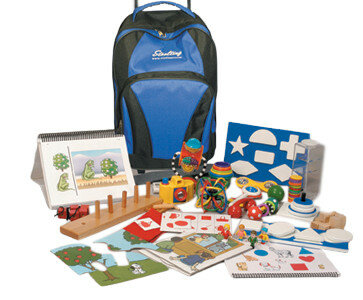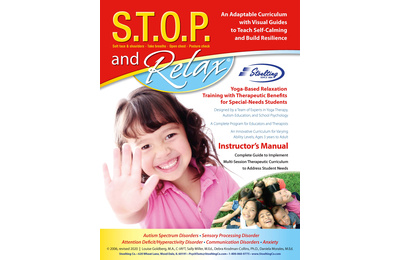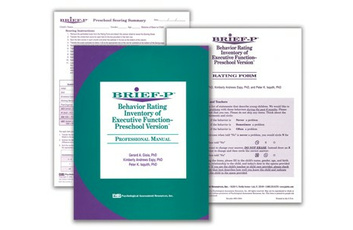Please specify the quantity of product(s).



Merrill-Palmer-Revised Scales of Development MPR
| Item | Product | Price | QTY |
|---|---|---|---|
| 37064 | Merrill-Palmer Scale-Revised | $1,195.00 | |
| 37064C | M-P-R Cognitive Battery Record Forms, Pk/20 | $50.00 | |
| 37064-DP | M-P-R Social Emotional Development Parent Scale, Pk/20 | $19.00 | |
| 37064-DPS | M-P-R Spanish S.E.Development Parent Scale, Pk/20 | $29.00 | |
| 37064-TP | M-P-R Social EmotionalTemperament Style-Parent Pk/20 | $19.00 | |
| 37064-TPS | M-P-R Spanish S.E.Temperament Style-Parent Pk/20 | $30.00 | |
| 37064G | M-P-R Gross Motor Record Form, Pk/20 | $30.00 | |
| 37064-HP | M-P-R Self-Help/Adaptive Development Scale-Parent pk/20 | $19.00 | |
| 37064-HPS | M-P-R Spanish Self-Help Parent Report Forms, Pk/20 | $30.00 | |
| 37064-LP | M-P-R Expressive Language Parent Frm, Pk/20 | $19.00 | |
| 37064-LR | M-P-R Expressive Language Evaluator Forms, Pk/20 | $19.00 | |
| 37064-PF | M-P-R Summary Report/Growth Score Profile pk/20 | $30.00 | |
| 37064M | M-P-R Manual | $75.00 | |
| 37064-SA | M-P-R Copying Response Sheet A, Pad of 20 | $9.00 | |
| 37064-SB | M-P-R Copying Response Sheet B, Pad of 20 | $9.00 | |
| 37064-VD | Merrill-Palmer-R Training Video, DVD format | $90.00 | |
| 37064-EB | Merrill-Palmer Revised Easel Book | $300.00 | |
| 37064-AK | MP Push & Spin Carousel | $39.00 | |
| 37064-AI | Dangle Toy (Cube Rattle with Tubes) | $43.00 | |
| 37064D | Rolling Case/Backpack | $75.00 |
Latest revision of the Merrill-Palmer-Revised Scales of Development meets Individuals with Disabilities Education Act (IDEA) criteria to provide early intervention in Cognitive, Language, Motor, Socioal-Emotional Development, and Adaptive behavior for early identification of developmental delays and learning difficulties
Meets the needs of infant and early childhood assessment, required by federal Individuals with Disabilities Education Act (IDEA) legislation and most states for early identification of developmental delays and learning difficulties.
Gale H. Roid, Ph. D. and Jackie L. Sampers, Ph. D.
- Age Range: 1 month– 6 1/2 years
- Time: Approximately 45 minutes administration
- Restricted Use: Level B-requires that the user has completed graduate-level courses in tests and measurement at a university or has received equivalent documented training
The latest revision of the 1931 Merrill-Palmer Scales, the Merrill-Palmer-R, published by Stoelting, retains the types of engaging “hands-on” activities that hold the interest of even the youngest subjects. Innovative, toy-based activities assess visual-motor, learning and problem solving using choke-safe, colorful materials. In the tradition of the Leiter-3, Stoelting has completely updated, revised and expanded the well-known and well-respected Merrill-Palmer Scales of Development. The Merrill-Palmer-R follows the natural progression of activities for children from 1 month to 6-1/2 years, and is especially useful in assessing children born pre-term (premature).
Meets the Requirements of IDEA Legislation with separate scores within each IDEA domain, as well as yielding a global score:
The Merrill-Palmer-R provides normative standard scores, percentiles, age equivalents and criterion-referenced, change-sensitive “growth scores” for the five IDEA domains:
- Cognitive Development — Verbal and Nonverbal Reasoning, Memory, Visual Motor and Speed of Processing
- Language/Communication Development — Receptive and Expressive Language, evaluated by Examiner and Parent
- Motor Development — Fine Motor and Gross Motor
- Social-Emotion Behavior — Developmental Scale and Clinical Data, rated by Examiner and Parent
- Self-Help/Adaptive Behavior — Developmental and Global Examiner and Parent Rating Scales
Addresses Five Major Assessment Needs
- Early identification of developmental delays
- Change-sensitive assessment of premature infants
- Measurement of incremental improvement in development
- Reliable and valid developmental assessment for children with limited expressive language ability
- Comprehensive assessment required by IDEA, to develop Individual Family Service Plans (IFSP) and Individual Education Plans (IEP)
Recommended uses for the Merrill-Palmer-R
- Developmental assessment of Cognitive, Language/Communication, Motor, Self-Help and Social-Emotional Domains, required by federal and state regulations
- Assessment of general cognitive development in English- and Spanish-speaking children
- Screening of infants and children who have been referred for the evaluation of possible developmental delays or disabilities
- Assessment of children with hearing impairments/deafness, autism or other disabilities with limited language skills
- Re-evaluations of individuals previously identified as “developmentally delayed”
The Merrill-Palmer-R Growth Score Profile allows the examiner to plot scores of individual Developmental Index domains, relating them to Age Equivalence, and across Developmental domains. Once these scores are plotted, specific areas of deficit can be identified using test item performance, relative to expectations. These results can then be used to develop an educational plan targeting those deficits.
Number of Items in Assessments of Early Childhood Development
| Merrill-Palmer-R | Mullen | Bayley-4 | Battelle |
|---|---|---|---|
| Cognitive (111*) | Visual Reception (33) | Cognitive (81) | Cognitive (105) |
| Gross Motor (75) | Gross Motor (35) | Gross Motor (58) | Motor (100) |
| Fine Motor (59) | Fine Motor (51) | Fine Motor (46) | |
| Language (140) | Language (98) | Language (79) | Communication (85) |
| Self-Help/Adaptability (44) | Adaptive Behavior (120) | Adaptability (60) | |
| Social/Emotional (37) | Social-Emotional (35) | Personability & Sociability (100) | |
| Total = 466 | Total = 217 | Total = 419 | Total = 450 |
*Overall cognitive index across scales=238
The Merrill-Palmer-R has excellent reliability. Internal consistency for the Developmental Index is .97-.98, with other developmental scales ranging from .87-.97. Scale information curves are provided. Validity data includes extensive content-related, criterion related and consequential validity studies. The test is a good fit to the Rasch Model, and expert evaluations supported the content structure. The Developmental Index correlates .92 with the Bayley Mental Scale, even higher with the Leiter-R, and .80-.86 with the SB-5 abbreviated battery.
The Manual provides national norms based on nearly 1,400 cases (over 200 atypical), corresponding to the 2000 Census for gender, ethnicity, socioeconomic level and geographic region.
Ordering Information
The complete Merrill-Palmer-R includes the comprehensive Administration/Scoring Manual, Infant Stimuli book, Easel Book, Fido Book, Choke-Safe Toys and Manipulatives, and 20 each of all necessary Forms (English only) in a convenient Rolling Bag. All forms are sold in packs of 20.
Specification Notes:
* Not scored separately.
**Heavy English language basis
MPR Introduction
Your browser does not support the video tag.
MPR Description
Your browser does not support the video tag.
Merrill-Palmer-Revised Research
Alcantud, F. & Alonso, Y. (2016). Predictive value of the Merrill-Palmer-R Scale applied during the first year of life. Psicología Educativa, 22(2), 87-92.
Amaia, U. U., Lopez-Pena, P., Carmen, S. V., Julia Gemma, T. R., Maria Asuncion, A. U., Zabalza Compains, M. T., . . . Gonzalez-Pinto, A. (2017). Psychoeducational preventive treatment for women at risk of postpartum depression: Study protocol for a randomized controlled trial, PROGEA. BMC Psychiatry, 17
- MPR used to assess child development within 5 main IDEA domains and compare to maternal postpartum depression
Bennett, T. A., Szatmari, P., Georgiades, K., Hanna, S., Janus, M., Georgiades, S., . . . Thompson, A. (2014). Language impairment and early social competence in preschoolers with autism spectrum disorders: A comparison of DSM-5 profiles. Journal of Autism and Developmental Disorders, 44(11), 2797-808.
- MPR Developmental Scale score used as a measure of Full Scale IQ
Fulton, M. L., & D'entremont, B. (2013). Utility of the psychoeducational profile-3 for assessing cognitive and language skills of children with autism spectrum disorders. Journal of Autism and Developmental Disorders, 43(10), 2460-71.
- Description of MPR's use to validate assessment, credits its utility with severely delayed infants
Georgiades, S., Szatmari, P., Duku, E., Zwaigenbaum, L., Bryson, S., Roberts, W., . . . Thompson, A. (2011). Phenotypic overlap between core diagnostic features and Emotional/Behavioral problems in preschool children with autism spectrum disorder. Journal of Autism and Developmental Disorders, 41(10), 1321-9.
- Developmental Index Score from MPR used to help identify core features of ASD
Mirenda, P., Smith, I. M., Vaillancourt, T., Georgiades, S., Duku, E., Szatmari, P., . . . Zwaigenbaum, L. (2010). Validating the repetitive behavior scale-revised in young children with autism spectrum disorder. Journal of Autism and Developmental Disorders, 40(12), 1521-30.
- MPR Developmental Index score used as overall measure to validate new instrument
Smith, I. M., Flanagan, H. E., Garon, N., & Bryson, S. E. (2015). Effectiveness of community-based early intervention based on pivotal response treatment. Journal of Autism and Developmental Disorders, 45(6), 1858-1872.
- Evaluation of early intervention program for autism
Jasmin, E., Couture, M., Mckinley, P., Reid, G., Fombonne, E., & Gisel, E. (2009). Sensori-motor and daily living skills of preschool children with autism spectrum disorders. Journal of Autism and Developmental Disorders, 39(2), 231-41.
- Use of MPR Developmental Index in study of sensorimotor function in children with autism
Volden, J., Smith, I. M., Szatmari, P., Bryson, S., Fombonne, E., Mirenda, P., . . . Thompson, A. (2011). Using the preschool language scale, fourth edition to characterize language in preschoolers with autism spectrum disorders. American Journal of Speech - Language Pathology (Online), 20(3), 200-208A.
- Assessment of language skills in infants with autism, using MPR language scores
MPR-Supplementary Information/Material

